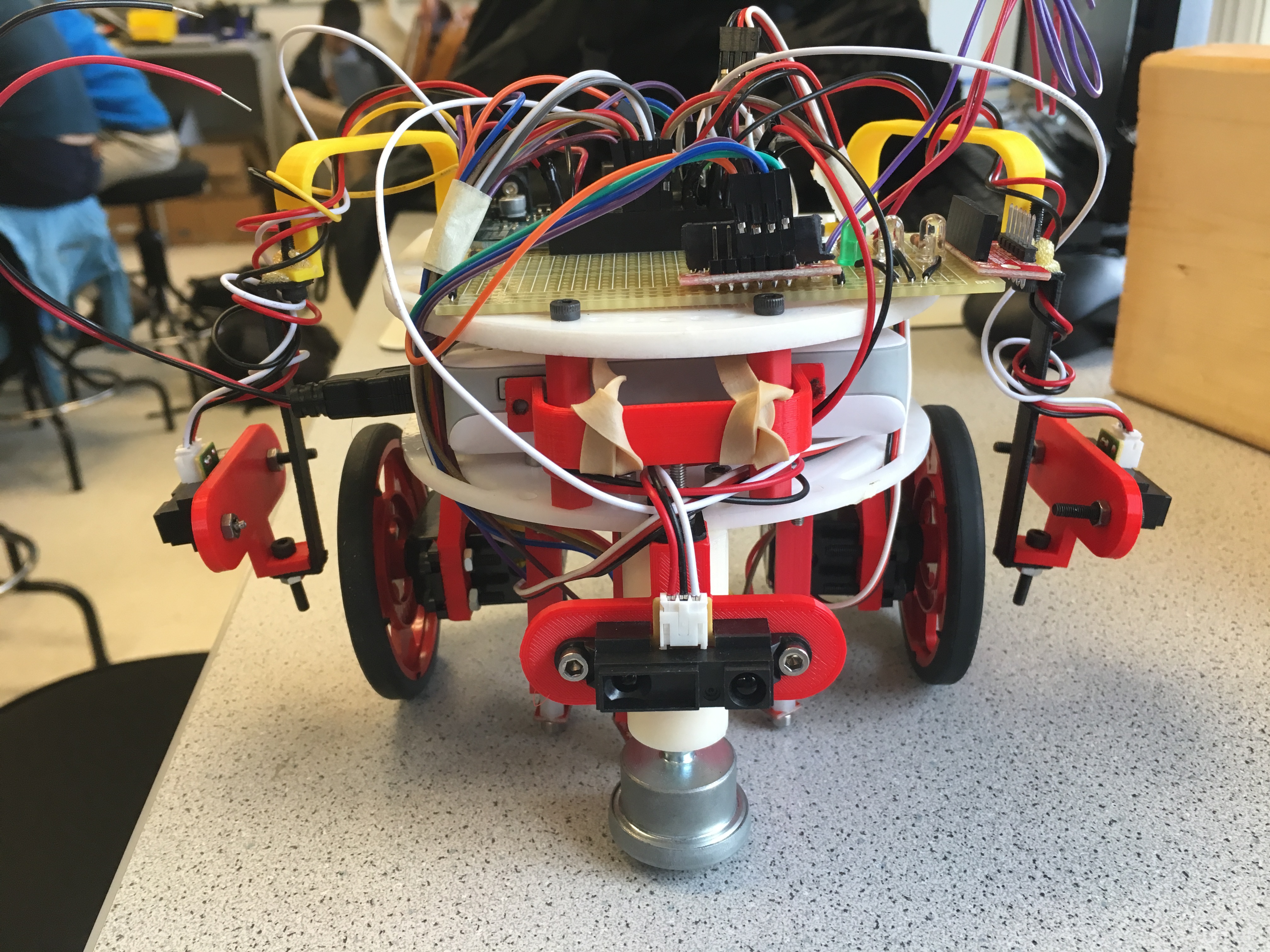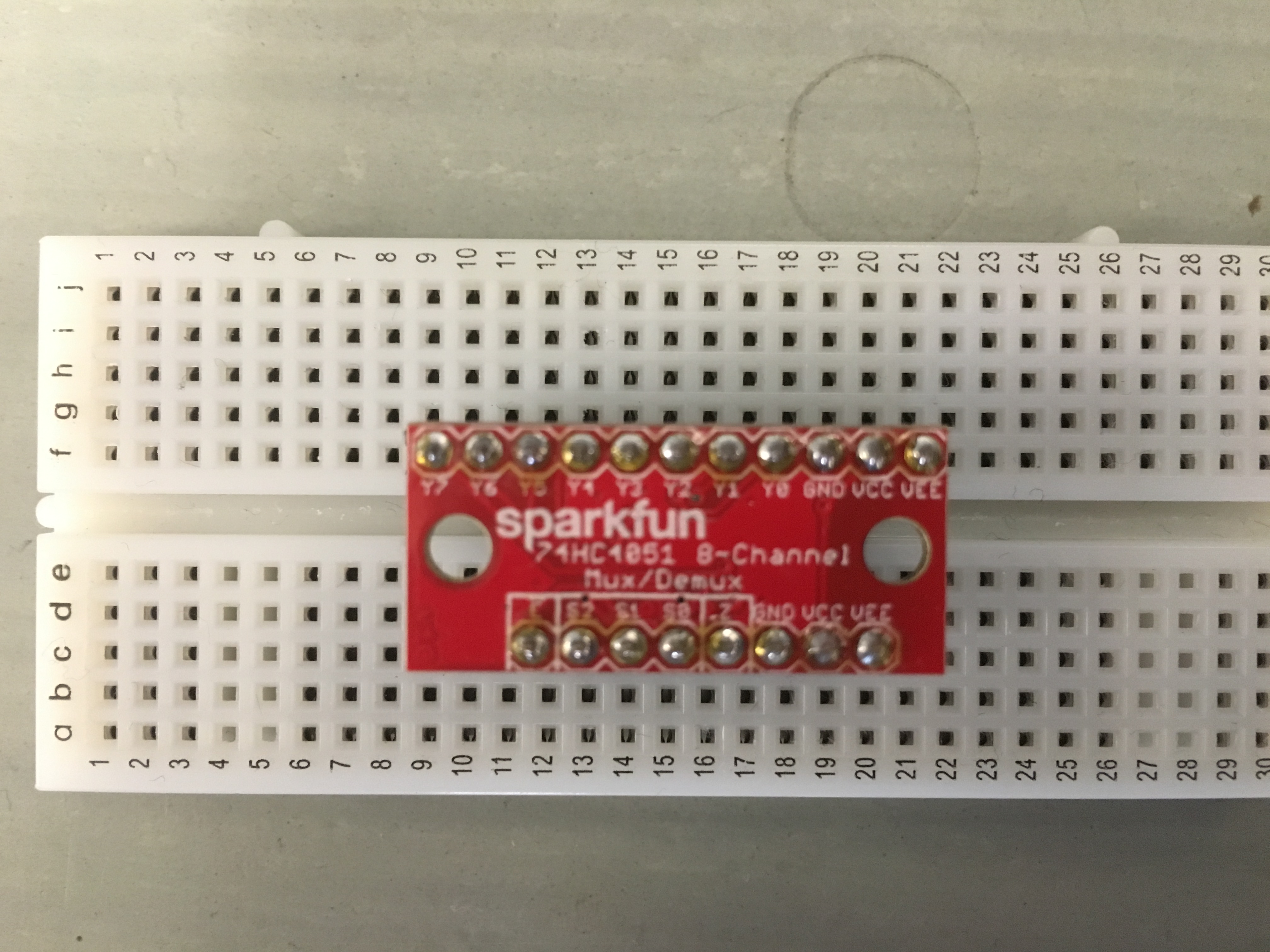For the simulation portion, we chose to implement a Depth First Search algorithm using python. The advantage of the simulation portion is that all the wall information for the maze is known beforehand. The idea of the Depth First Search (DFS) is to start with a graph (maze) of all unvisited nodes. At each iteration of the algorithm, move forward to an unvisited node in the graph, marking this new node as visited. If you encounter a node from which it is impossible to move forward to a new, unvisited node, move backward to the node you just came from and check if it is possible to move to another unvisited node from that position. If it is possible, begin moving forward again. If it is not possible, backtrack once again.
If you backtrack all the way to the starting node and there are no possible moves to an unvisited node from that position, the algorithm is finished. If all the nodes in the graph have been visited, great! If some nodes have not been visited, mark them as unreachable.
Before discussing the specifics of our implementation in python, we should mention how we chose to encode maze information. For our test cases, we created 5x4 arrays of 7-bit values to represent mazes. The information each bit encodes is as follows:
- 0th bit represents the north wall
- 1st bit represents the south wall
- 2nd bit represents the east wall
- 3rd bit represents the west wall
- 4th bit represents that the node is unreachable
- 5th bit represents that the node has been visited
- 6th bit represents that robot is currently at the node
For example, 1101010 means that the robot is currently at the node, the node has been visited, the node is not unreachable, and the node has walls on its west and south sides.
For our maze exploration algorithm, we found the possible moves at each node using the following logic. If there is no wall to the north and the node to the north has not been visited, then moving north is a possible move. We used the exact same logic for determining whether south, east, and west were possible moves. In order to keep track of the possible moves at a node, we created an array called possible_moves. Once the possible moves were found, we randomly chose the next move to make using:
# move in random direction
next_move = random.choice(possible_moves)
self.maze[current_row][current_column] &= 0b0111111
backtrack.append((current_row, current_column))
if (next_move == 0b0001):
current_row -= 1
elif (next_move == 0b0010):
current_row += 1
elif (next_move == 0b0100):
current_column += 1
elif (next_move == 0b1000):
current_column -= 1
self.maze[current_row][current_column] |= 0b1100000
self.update_maze()
time.sleep(.1)
First, the next move is chosen randomly. Then, we set the MSB of the previous node low, indicating that it is no longer the robot's current position. Next, the previous node is added to an array called backtrack, which we will discuss shortly. The if/elif statements are what make the actual move. The movements are encoded as: 0b0001 = move north, 0b0010 = move south, 0b0100 = move east, and 0b1000 = move west. We then set the two MSBs of the new node high, indicating that it is now the robot's current position and has been visited. Finally, we update the maze GUI, which we will discuss shortly, as well.
As alluded to earlier, we used another array called backtrack to help facilitate moving backward in the algorithm. When we move forward from a node, we add it to this backtrack array, as was seen above. When we reach a node that has no valid forward moves to make (no unvisited nodes adjacent to it) we backtrack using:
# no more moves ahead -> backtrack
if (len(possible_moves) == 0):
self.maze[current_row][current_column] &= 0b0111111
prev_node = backtrack[-1]
backtrack.pop()
current_row = prev_node[0]
current_column = prev_node[1]
self.maze[current_row][current_column] |= 0b1100000
self.update_maze()
time.sleep(.1)
When the length of possible_moves is zero, we know we need to backtrack. First, we clear the MSB of the current node to indicate that it will no longer be the robot's current position. We then take the node most recently added to backtrack and move to it, setting its two MSBs high. Finally, we update the maze GUI accordingly.
We created the maze GUI using python's tkinter package. Using this package, we made a 5x4 grid of colored squares to represent the maze. Each time the robot moves, we update the GUI. We colored the squares according to the following scheme:
- White means no information about that position yet
- Green means that position is the robot's current location
- Blue means that position has already been visited
- Red means that position is unreachable
Our maze exploration algorithm ends with the following:
for row in range(NUM_ROWS):
for column in range(NUM_COLUMNS):
if (not self.maze[row][column] & 0b0100000): # unvisited
self.maze[row][column] |= 0b0010000
self.update_maze()
self.done_sign = Tkinter.Label(text="Done Exploring!", fg="black", bg="white", state="normal")
self.done_sign.grid(columnspan = 1)
For each node in the graph, if the 2nd MSB is not high, indicating that the node has not been visited, we set the 3rd MSB high, indicating that the node is unreachable. Finally, the algorithm ends by printing a "Done Exploring!" label at the bottom of the GUI.
Here is our maze traversal algorithm and GUI in action!

